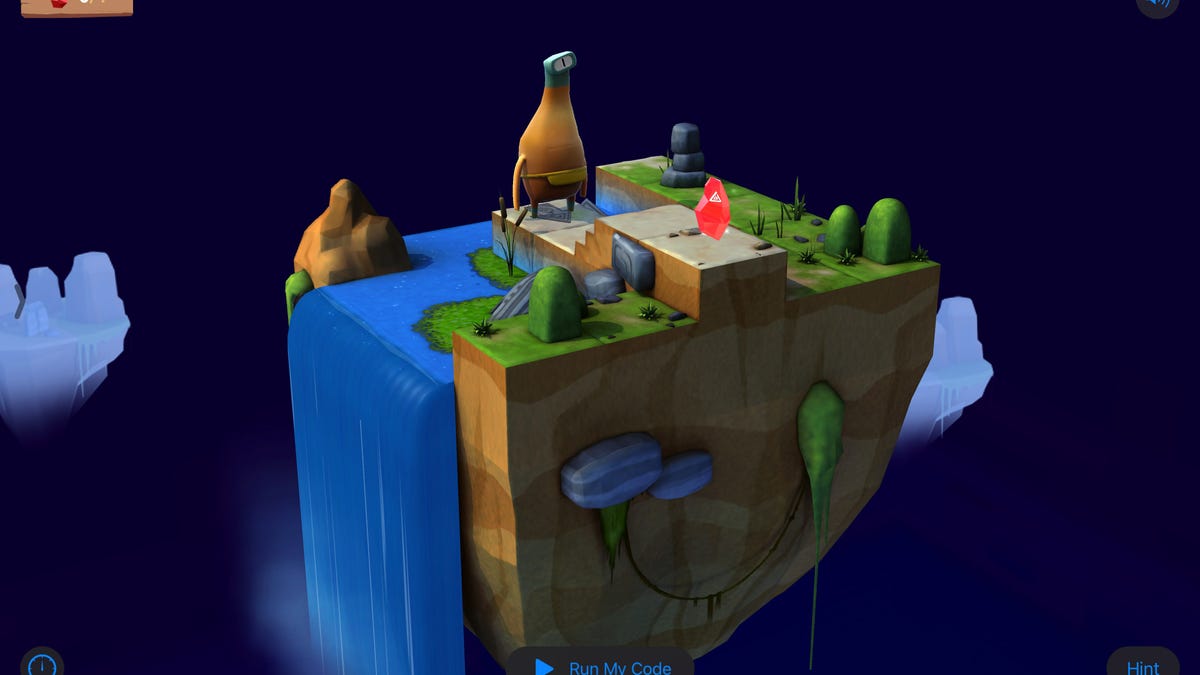Apple's Swift Playgrounds 4 lets programmers submit apps to the app store
The iPad app for budding software developers also gets new demo apps and supports Apple's SwiftUI technology that bridges across iPhones, iPads and Macs.

Swift Playgrounds 4 teaches programming by letting coders command a character called Byte to do things like move and collect gems.
Apple on Wednesday released a major new version of Swift Playgrounds, its iPad and Mac app designed to teach kids its Swift programming language, that now lets budding coders submit their projects to Apple's app store.
Swift Playgrounds introduces programming by letting coders control a character named Byte. Programmers learn basics like commands, variables, loops, and if-this-then-that operations. The code they type is reflected immediately on a panel on the screen, letting them see immediately what their changes accomplish.
The Swift Playgrounds introductory lesson -- updated for Swift Playgrounds 4 -- expands to more challenging, elaborate tutorials. The new version also offers a broader set of detailed "walk-through" demo apps that students can scrutinize and copy to see how everything works.
You may not think programming is a necessary ability -- indeed, one point of Apple's products is to make digital technology useful even if you don't have a computer science degree. But the creativity and logical thinking skills it fosters are certainly useful in schools and work, and programming is an important career option.
Apple first released Swift Playgrounds five years ago as an iPad app, adding a Mac incarnation with the most recent version 3. Version 4 modernizes the tool significantly, starting with the iPad version. In addition to being able to submit apps to the app store, Swift Playgrounds also supports Apple's SwiftUI technology, a framework of user interface elements introduced in 2019 that helps bridge the gap between iPad, iPhone and Mac.
Being able to submit apps to Apple's app store doesn't guarantee the world will be able to try them. That's because Apple's usual app store review process applies. So don't expect your "hello world" experimental app to appear.
And to submit apps, programmers will need an Apple developer account, which costs $99 per year. Apple offers free accounts to schools, though.
Apple's Swift programming language is one of a new generation of languages like Rust from Firefox maker Mozilla (now run by the independent Rust Foundation) and Go from Google that are designed to make programmers more productive. These new languages are designed to do things like boost performance, avoid security problems and benefit more from hardware features like multicore processors that weren't common decades ago.
Swift Playgrounds also serves Apple's business interests, training people into becoming tomorrow's software developers and teaching them to use Apple's tools. Swift Playgrounds apps can be sent to Xcode, Apple's professional software development tool.
Even though Swift quickly caught on, its predecessor, Objective-C, remains widely used, according to the periodically updated chart of programming language popularity from analyst firm RedMonk.

